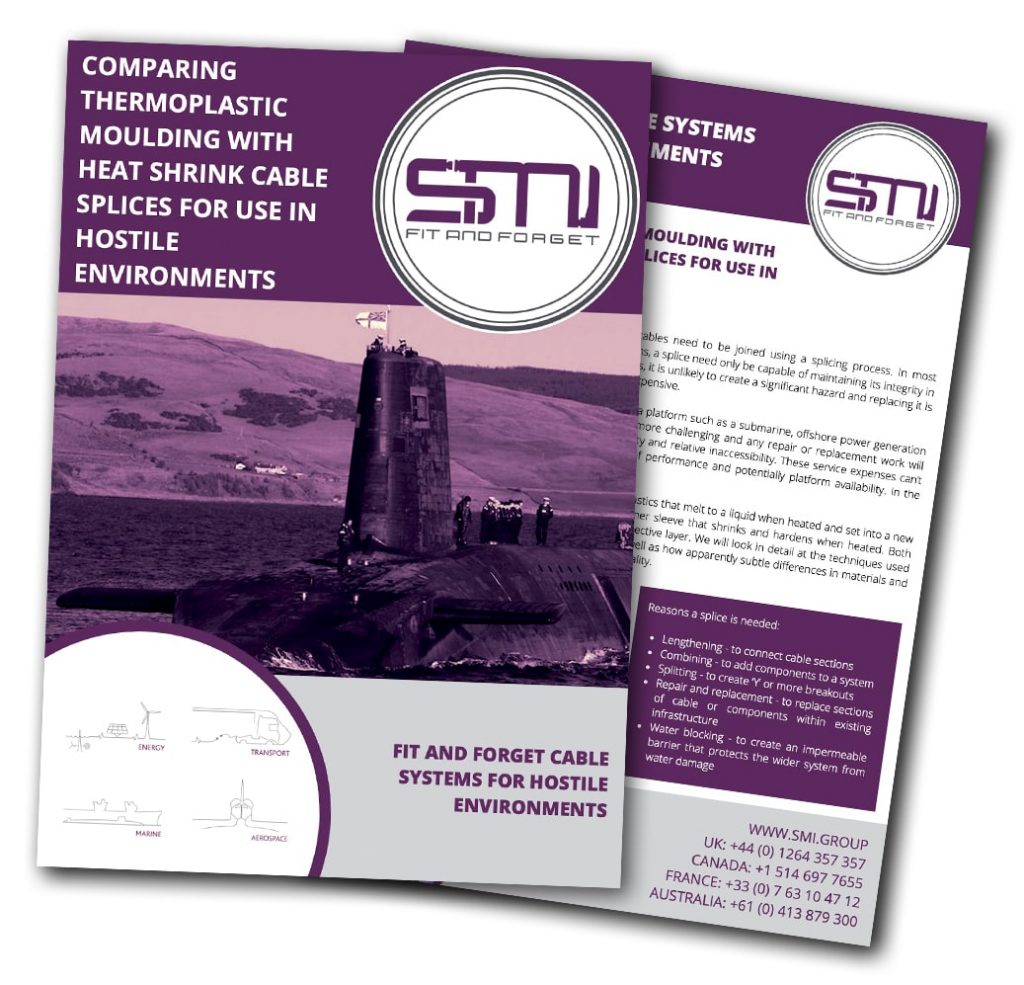Comparing thermoplastic moulding and heat shrink wraps for cable splices in hostile environments
There are many situations in which two or more cables need to be joined using a splicing process. In most terrestrial electronic or telecommunication applications, a splice need only be capable of maintaining its integrity in the face of everyday environmental conditions. If it fails, it is unlikely to create a significant hazard and replacing it is inconvenient but not excessively time-consuming or expensive.
The same is not true when the splice is located within a platform such as a submarine, offshore power generation array or aircraft. Environmental conditions are vastly more challenging and any repair or replacement work will require significant resources due to platform complexity and relative inaccessibility. These service expenses can’t be avoided, as an unplanned failure will lead to loss of performance and potentially platform availability. In the worst-case scenario, it could cost lives.
This paper will compare splicing using thermoplastics, plastics that melt to a liquid when heated and set into a new solid shape on cooling, with heat shrink splices, a polymer sleeve that shrinks and hardens when heated. Both techniques are used to encapsulate conductors in a protective layer. We will look in detail at the techniques used in thermoplastic moulding and heat shrink wrapping, as well as how apparently subtle differences in materials and processes can lead to significant variations in outcome quality.
What is splicing?
Splicing is the process of joining electrical or optical cable conductors to create uninterrupted transmission of signal. To achieve a splice, surfaces are prepared, connected, insulated and protected. Splices can be arranged in various physical configurations to suit their application, with certain splicing techniques lending themselves to particular configurations, as we shall see later in this paper.
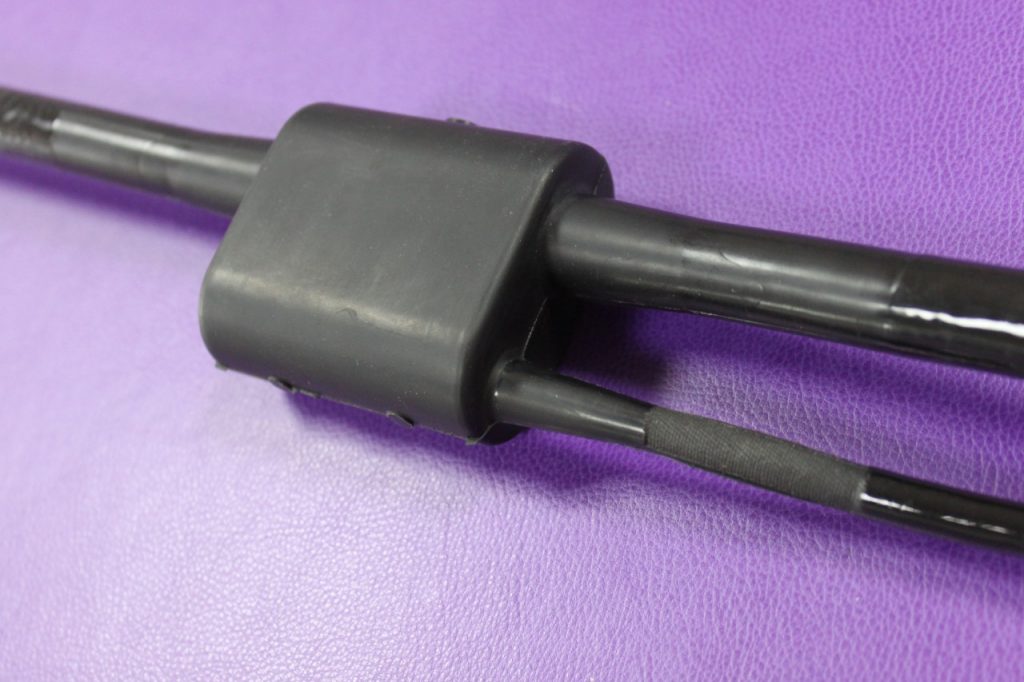
There are multiple reasons why a splice is needed:
- Lengthening – to connect cable sections
- Combining – to add components to a system
- Splitting – to create ‘Y’ or more breakouts
- Repair and replacement – to replace sections of cable or components within existing infrastructure
- Water blocking – to create an impermeable barrier that protects the wider system from water damage
To ensure splice integrity is maintained over its design life, materials and processes used to create it must be carefully selected to withstand the environmental challenges it will face. Those challenges can vary significantly. This paper is primarily focussed on the most hostile environments, for example those faced by platforms operating immersed in sea water and at high-altitude.
Technologies overview
The basic process for thermoplastic moulding is to connect and position cables to be spliced within a mould inside a sealed oven into which plastic granules are injected and melted. The splice becomes completely encapsulated in molten plastic, which takes the shape of the mould. The splice is ready for use as soon as the plastic cools below its melting point, although an ambient temperature is normally favoured.
With a heat shrink wrapped splice, cables to be joined are again connected and positioned appropriately. However, an adhesive backed polymer sleeve is then pulled over the conductor joint and the structure positioned within a box through which hot air is blown, heating the sleeve so that it shrinks to the form of the underlying splice structure.
You may have seen, for example, telecoms engineers creating heat shrink wrapped splices on the roadside using a hot air gun. The integrity of splices created using this basic version of the above technique is not appropriate for high capital investment platforms operating in hostile environments. Thermoset plastics that become irreversibly hardened following the completion of a curing process can be used in splicing but, again, not typically for the applications under consideration here.
Impermeability of the splice
For many platforms operating in hostile environments, the most fundamental feature of a splice is that it is impermeable to water and other contaminants that could damage the connection within the splice. Haworth [1] recognised nearly half a century ago that, “Cable seal failure can invariably be traced to poor bonding” reflecting the importance of establishing material bonding between the cable jackets and the splice material.
Thermoplastic moulding
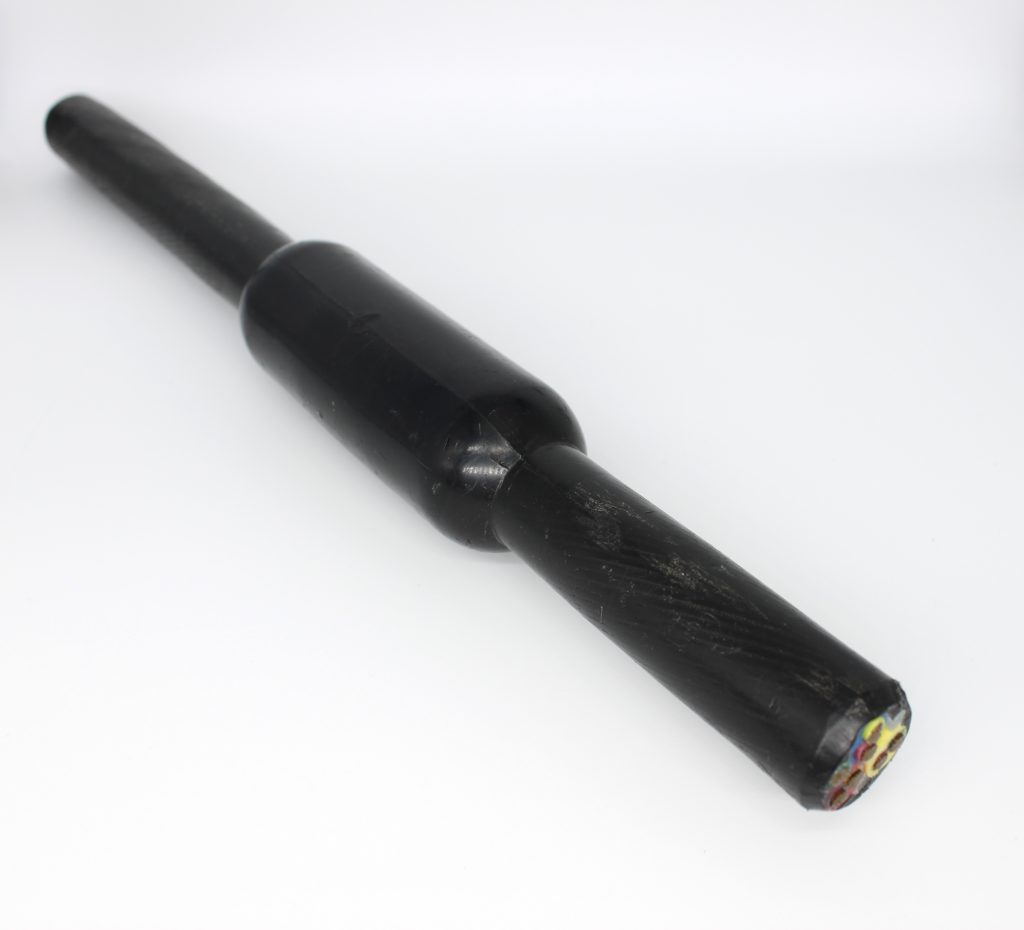
SMI’s splicing technology is focussed on encapsulating the splice with thermoplastic that has been amalgamated at an atomic level with the underlying splice materials, including the cable jacket.
Subsea cables can be manufactured with different jacket materials, including polyurethane and polyethylene. Thermoplastic polyurethane (PU) is commonly used for cable jackets. It has significant elasticity and wear resistance properties. However, it absorbs water, a tendency that increases as temperature rises, which degrades its electrical insulation over time. Investigating this phenomenon when evaluating PU as a thermal insulator for the oil and gas industry, Le Gaca, Choqueusea and Melotb [2] determined that a commercial polyurethane immersed for more than a year in natural sea water from 25°C to 120°C absorbs about 1.8% of water and undergoes hydrolysis at high temperature. This reduces its suitability as a splice encapsulation material.
Thermoplastic polyethylene (PE) has a unique combination of excellent dielectric characteristics, high electrical resistivity, low moisture permeation and low water absorption. PE is effectively inert in the ocean, with polyethylene jacketed cables having now survived for more than 40 years immersed in sea water. Leading polymer scientists advise that the total conversion of PE to carbon dioxide and water would take centuries [3]. For over 30 years, telecommunications infrastructure companies and the Royal Navy have used PE jacketed cables in subsea applications.
Despite the benefits of PE, it is notoriously difficult to process. However, SMI has successfully mastered the techniques required to mould PE and atomically amalgamate it with other materials, including PE of various densities. An example of a challenge presented by PE is that it shrinks substantially on cooling, which can cause voids that might lead to loss of integrity. SMI uses pressure moulding to overcome this challenge, completely eliminating this potential leak path. An SMI splice will remain sealed for at least the life of the cable and potentially longer, as the environmental resistance of the material encapsulating the splice is greater than that of the jacket alone.
Heat shrink splices
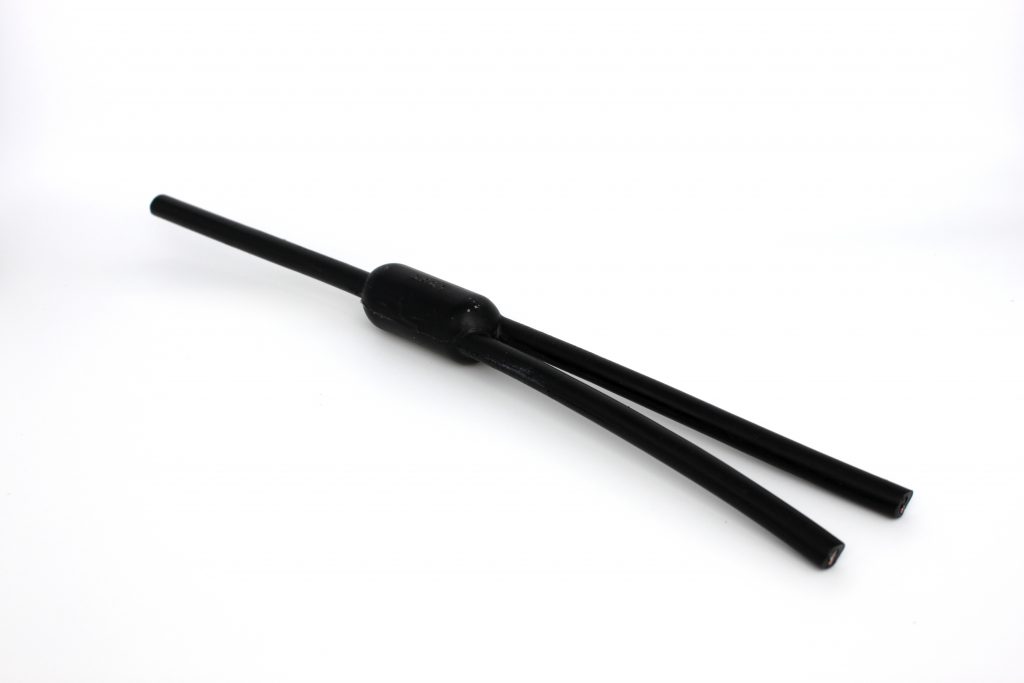
Heat shrinking of a protective polymer layer onto a splice initially creates a very tight seal. However, the operating conditions under consideration in this paper are extremely hostile. The seal is tight but not indivisible, as it is when the materials are atomically bonded with thermoplastic moulding. The environmental challenges such splices will face over a long operating life can create leak paths in areas of weakness. Heat shrink splices are also inappropriate for use in ‘Y’ configurations, as creating a perfect seal in the interstitial space between cables is very challenging to achieve. For this reason, thermoplastic moulding is more appropriate for ‘Y’ splices, even before other factors are considered.
Another issue affecting the quality of seal delivered by heat shrink splicing is the polymer wrap’s compatibility with the cable jacket material. Many wraps are designed to be used with new cables and are only tested for use with those cables. Within onboard maintenance, repair and replacement programmes, installed cables are likely to be from a different generation of manufacture and may even be produced by a different company. Using heat shrink splicing on non-homologous cables means there is no guarantee that the wrap will adhere to the cable jacket to the specification stated in published test results.
Flooding of splice due to cable leak
A key requirement of splices integrated onto platforms exposed to moisture is the prevention of water that has entered a cable at a point of damage passing along its length by capillary action and flooding the splice, effectively bypassing its external sealing. This will of course cause electrical failures and damage the splice structure. However, water may also pass through the splice and onwards into further cables or connected equipment, leading to additional failures elsewhere in the system. Czupryna, Everaere and Delattre noted [4] that, “It is well accepted that longitudinal water ingress can cause cable failures, a reduction in cable reliability, an increase in maintenance costs and a reduction in cable life.”
Thermoplastic moulding
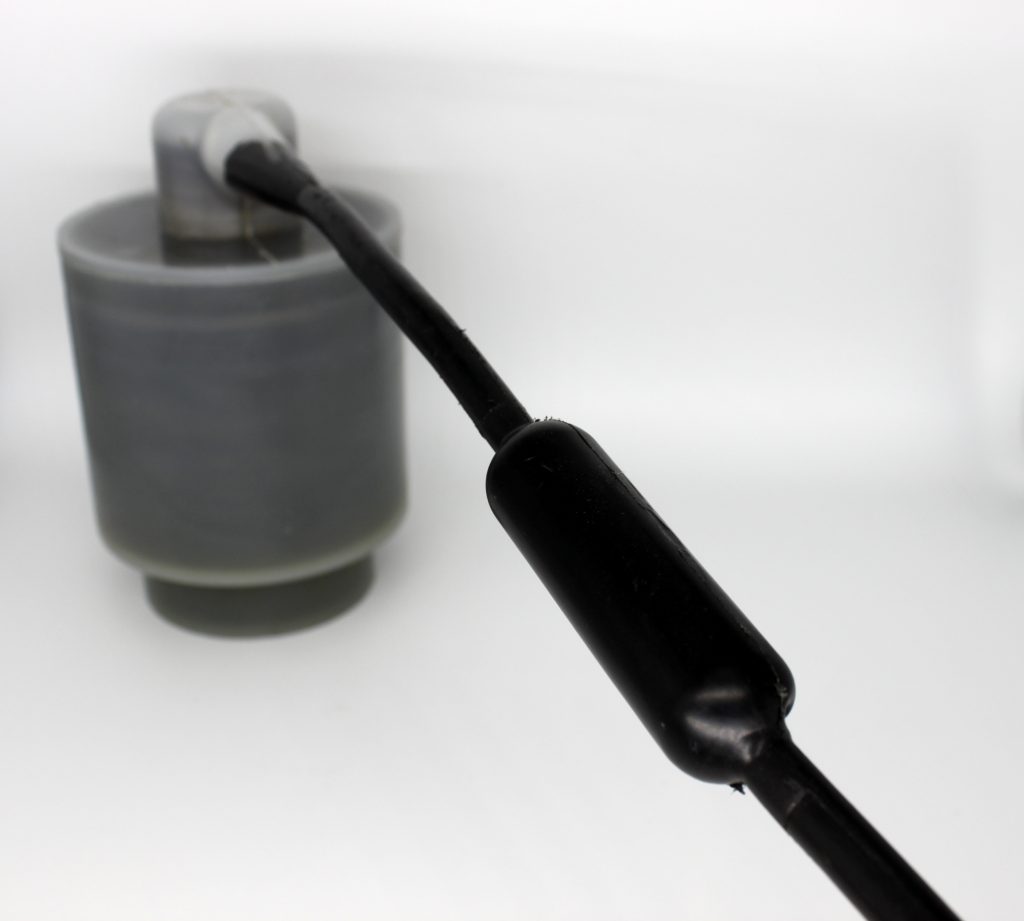
Water blocking is a manufacturing outcome available in thermoplastic moulding whereby the amalgamation of materials makes it physically impossible for water to pass along the surface of the cable conductor into the splice.
In high value capital platforms, tracing and gaining access to cables is often complex, difficult, time consuming and therefore expensive. If water blocked splices are included in designs, the potential for moisture ingress problems to occur are reduced, supporting service availability and saving significant costs. SMI provides water blocked splices as standard even when there is perceived to be no need to reduce the potential for high through life costs.
A good example of the value of this in action relates to the replacement splicing SMI installed in the bow sonar hydrophone system of an in-service submarine class. The original hydrophone cables were not water blocked but SMI splices are manufactured with water blocking as standard. When a fault in a non-SMI part of the system created a leak, our splices prevented water passing unimpeded into further parts of the hydrophone system, limiting the amount of replacement work that needed to be carried out.
Heat shrink splices
Heat shrink wrapped splices are not water blocked. Water entering the cable system structure at a site of splice or cable damage can travel along cable, through the splice and into any further attached cables. This can and does cause the failure of dependent systems alongside significant repair costs.
Manufacturing process considerations
Consistent high quality of manufacture is a critical feature of thermoplastic moulding, as in many applications onboard a complex platform, the ability to test the performance of a splice in advance of it being used in operational conditions is limited. There is no doubt that thermoplastic moulding is the more challenging to perfect of the two manufacturing types we are considering.
Thermoplastic moulding
The manufacturing objective of thermoplastic splicing is to consistently create perfect bonding of materials. Given the inherent challenges of working with PE, it is absolutely vital that everything affecting the amalgamation process, including materials, placement, pressure, heat and environmental conditions are taken account of. SMI maintains complete control over the bonding process through its understanding of the foundational science and its investment in bespoke equipment to provide control over all relevant factors.
SMI has developed a sealed moulding unit to ensure that the pressure and temperature applied during the splicing process are precisely controlled to neutralise the effects of ambient conditions. This guarantees consistency in moulding outcome and total confidence in the quality of the resulting splice. As well as a factory-based moulding unit, SMI has developed a portable model that delivers the same features to enable splicing to be carried out on the platform to the same specifications.
Another factor in delivering consistent quality is accurate placement of the components that make up the joint assembly. To ensure sufficient insulation around the conductors at the splice’s score, especially coaxial cables, it is vital that moulded material is precisely concentric around them. Concentricity is more easily controlled as cable wire gauge, number of conductors and size increases. This is because greater cable stiffness works to support the splice components. Conversely, it is more difficult to deliver accurate material placement for very small cables. SMI’s splicing equipment is designed to ensure accurate concentricity in all splices, regardless of size.
Significant depressions on the surface of mouldings, known as ‘sinks’, arise when one of the fundamentals of thermoplastic moulding is ignored: managing the thermal profile during cooling. Avoiding this cause of splice defects is challenging because heat is generally conducted from the enclosing thermoplastic moulding equipment into the splice, affecting the uniformity of the thermal profile. While sinks can indicate the absence of voids within the moulding, they are unacceptable to customers and damage product reputation.
SMI uses a carefully controlled process to manage the thermal profile within the mould cavity, as well introducing thermal control in specific locations to protect sensitive areas of the splice lay-up. These mitigations prevent sinks while ensuring complete amalgamation with cable jackets is delivered.
Heat shrink splices
The main manufacturing challenge of heat shrink splicing is thermal control of the heat enclosure box, which take no account of ambient temperature and give operators significant scope to use their subjective judgement on when the process is complete. Setting an incorrect temperature or process time will create faults in the resulting wrap. The lack of specialist process expertise and process automation in this splicing technology leads to variability in the quality of the outcome.
Both technologies enable rapid splicing
Thermoplastic moulding and heat shrinking can deliver rapid splicing, as splices can be immersed in sea water and operating within minutes of being removed from its mould or heat box. This contrasts with thermoset plastic splicing, which requires a curing period of up to 16 hours to harden and be ready for use.
The best example we have of the benefit of rapid splicing is a repair SMI carried out on a range cable that was located on a beach and accessible for three hours at each low tide. SMI technicians carried our thermoplastic process tools and a small generator to the beach as the tide ebbed. The cable repair was completed by manufacturing a new splice before the flood tide returned and covered the cable.
The time advantage these technologies offer becomes very significant when multiple cables must be spliced.
Assured reliability through testing
It is relatively easy to test splice integrity in a factory setting. When possible, testing should be carried out under conditions that closely replicate those that splices will encounter on the platform on which they are installed. For example, splices intended for submarine use can be tested under the same pressure they will experience at maximum submerged depth.
As many splice installations are carried out on the platform, testing is more challenging. In those situations, best practice is for samples of the cables to be spliced to be brought to the factory, spliced and then tested.
An option to provide insight into splice integrity in the field is to leak test them. Technicians immerse the splice in water at ambient pressure and measure the insulation resistance between the screen or cores and the water. This is a useful test that has given confidence in the reliability of our technology over the thousands of splices we have manufactured and installed in situ.
Conclusion
While both thermoplastic moulding and heat shrink wrapped splices are often used on platforms operating in hostile environments, SMI maintains that the former provides a far more reliable splice. Heat shrink wrapped splices, while simpler to deliver and at an initially lower cost, do not provide the same through life impermeability and are more prone to unexpected failures. To support through life, reliable performance of systems integrated onto high capital investment platforms, as well as to reduce ongoing costs associated with maintenance and repair, thermoplastic moulded splices are the clear leader.
Get in touch with SMI to learn more about our solutions.
References
[1] R F Haworth “General Dynamics (Groton Ct Electric Boat Div) Handbook of pressure-proof connector and cable harness design”, Naval Research Laboratory, Orlando (January 1973)
[2] P.Y. Le Gaca, D. Choqueusea, D. Melotb, “Description and modeling of polyurethane hydrolysis used as thermal insulation in oil offshore conditions” Polymer Testing, Volume 32, Issue 8, Pages 1588-1593. December 2013
[3] Andrady, A.L., “Plastics and their impacts in the marine environment,” Proceedings International Marine Debris Conference on Derelict Fishing Gear and the Marine Environment, Hawaii, August (2000)
[4] Czupryna, Everaere and Delattre: “Improvements in water blocking materials for new power cable applications” Jicable conference, France, 2007
